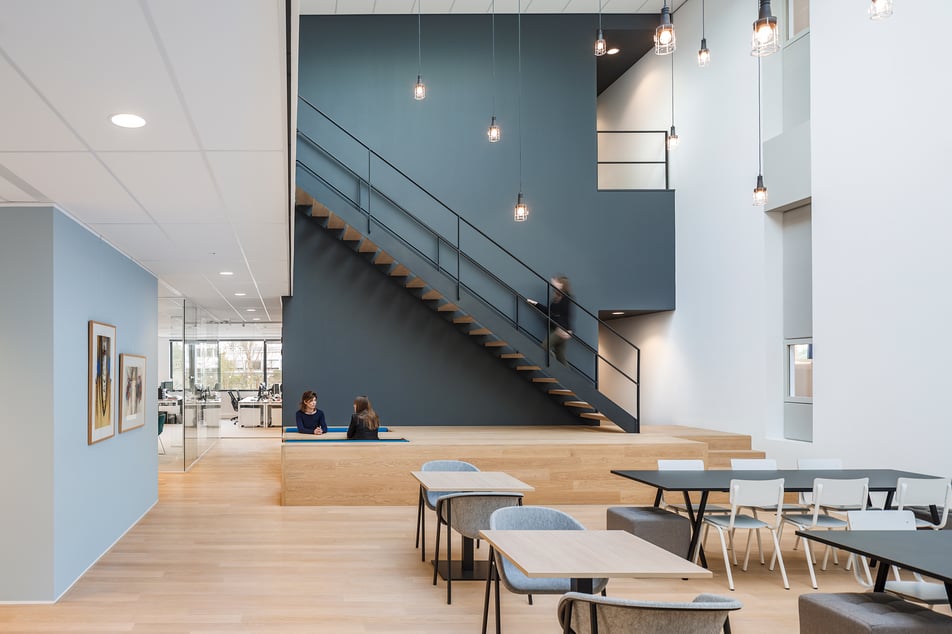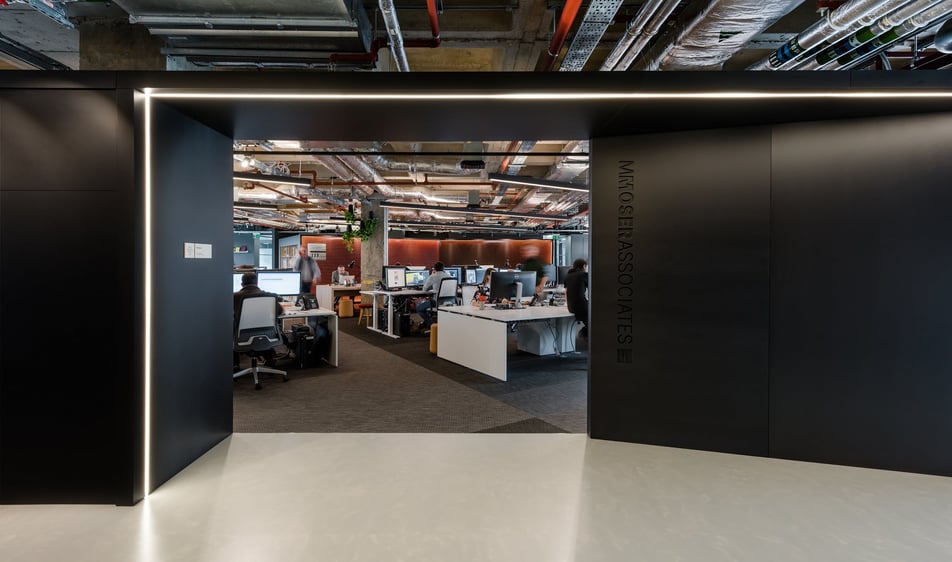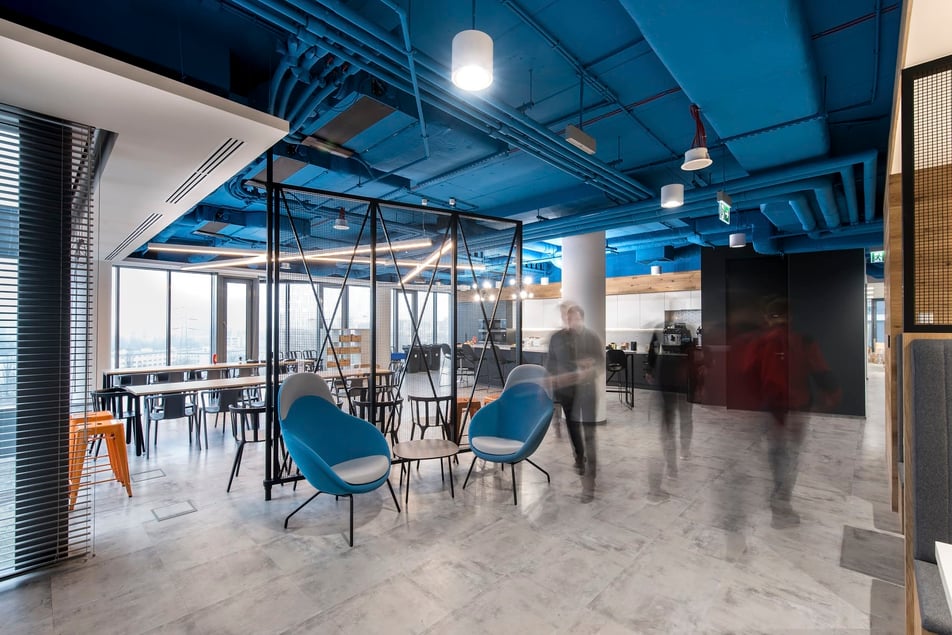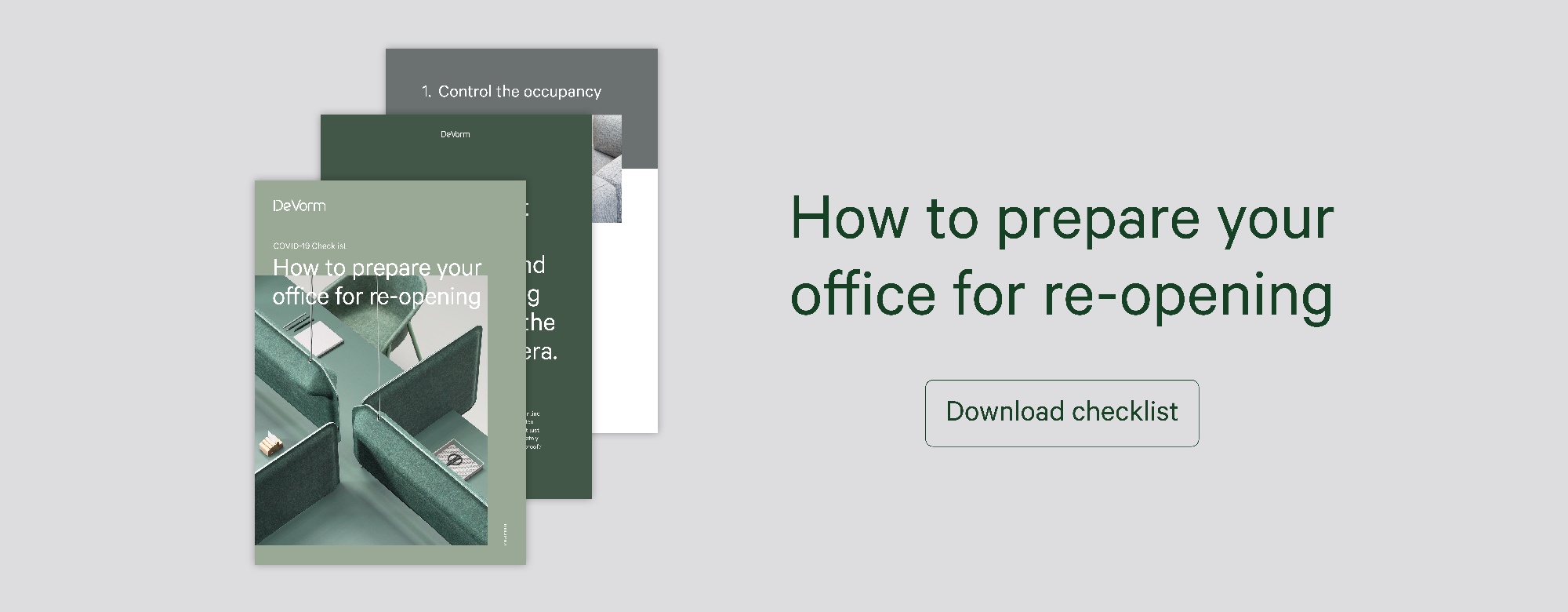Journal
Back to Work: Architects on the New Normal in Office Design
Over the last three months, the future of the workplace has raised many debates. With millions of people working from home, it is still unclear how to return to the office, when it will happen and what expects us in this new reality.
Did the pandemic put an end to an open office? Will we need a physical workplace at all? For architects, these questions are now high on the agenda. We talked to Diederik Fokkema (Founder of Fokkema & Partners) and Raquel Machado (Associate Designer at M Moser Associates) about the ‘new normal’ in office design and how they prepare for it.
How will the office and workplace design change?
DF: It is hard to properly predict what the world will look like in the upcoming months. Just like three months ago many of us couldn’t imagine the reality we are dealing with now. That’s why I am still observing the situation and waiting with conclusions. Without a doubt, coronavirus will have both short- and long-term effects. Some of the short-term effects are already on the agenda - companies are implementing practical measures for social distancing at work and lower space occupancy.
The second, long-term aspect is more interesting, in my opinion. The crisis shows us the added value of physical office and cooperation. But at this time of uncertainty, it happens that the opinions swing very much from one extreme to another. Some people have already declared the end of the open office and the office in general. Others predict that nobody will be willing to work from home anymore.
While these are the extremes, the truth is probably somewhere in between. Crammed offices with maximum space utilisation won’t be the case anymore. They are likely to disappear, together with 1.20 desks. Working from home won’t go away anytime soon. At the same time, the pandemic showed that not everything can be done remotely, so people will slowly return to the physical office.
RM: For many businesses, the current situation is forcing them to instill deeper trust in their employees. Our research highlights that most people can work effectively from home, but do want to return to the office at least some of the time. Workplace design will need to capture why people want to come into space and what they want to get out of it.
“Our research highlights that most people can work effectively from home, but do want to return to the office at least some of the time.”
Although the design will change in the short-term to accommodate more complex health and safety considerations, there will also be an impact on culture. People will need time to adapt to a “new normal” and the purpose and experience of our physical, social and digital work environments will shift with new priorities.
In the long term, it’s unlikely we’ll go back to cubicle offices. Home will serve as another workspace with a specific function. There will be many waves of change and immediate re-entry to the workplace is just the first one.

Could you share some of the experiences of your clients?
RM: We’re addressing the impact COVID-19 has had and the changes that will be necessary to get people back to the workplace. We’re advising businesses on how they can safely re-enter the office and have a deep benchmark of experience from across Asia that we’re bringing to other markets experiencing the lockdown.
Many, if not all businesses have embraced change during this time. A client that previously had a very hierarchical structure with directors in private offices and no flexible working policy has seen a positive shift. The need to work from home has transformed its core, accelerated digitalisation, reduced occupancy rate and created a completely new work culture. We hope to continue supporting our clients in their ongoing evolution.
DF: The power of office environment lies in social cohesion occurring when people come and work together. They exchange ideas and generate new creative insights. It is a combination of expertise and coincidence that brings out the most surprising results.
What we have noticed with our clients is that the crisis deprived them of this social cohesion. With remote work, many people realised that they actually like to come to the office and miss the real-life communication. Moreover, not all tasks can be done remotely. All these factors made companies look for the ways to bring people back to the office, one way or another.
How can architecture encourage social distancing by changing behaviour inside an office?
RM: We’ve been using architecture to shape behaviour for many years. The same principles of “behaviour-based design” can be applied to the post-COVID world.
There will be a value in understanding the purpose of people’s activities at work and the desired outcomes. To create truly adaptive environments, we must design for flexibility and cycles of user change. By implementing virus prevention measures, businesses can build employee confidence in returning to the workplace.
“Social distancing behaviour will remain an important part of
an integrated approach.”
From increasing desk space and decreasing headcount to undertaking shift work, there will be a range of mitigation measures tailored to the individual needs of each business. This may require a deep analysis of entire buildings and the spaces within them, mapping individual user journeys so that workplaces can be reconfigured to better support health and safety. Signage and wayfinding may enhance comfort and support behaviour by guiding informed routes throughout the space.
Looking beyond social distancing as an immediate solution, health and wellness, interaction and socialising will become ever more intrinsic to the long-term architecture of our spaces.

Which measures will help you control the situation in large offices with many floors, rooms and people?
DF: The first and most important measure is lowering space occupancy. There are offices with 7-8 m2 per employee, which is clearly not enough to keep sufficient distance. In most cases, businesses will have to reduce their maximum office capacity to 50-60%. But it largely depends on the office area per person - some companies will feel this lack of capacity more than others.
We have already seen a few cases of successful COVID-19 management in large buildings. One came from South Korea - a 19-story floor building in the busy urban area of Seoul. 11 of these floors were offices. When the outbreak happened, the total percentage of confirmed cases was 8.5%. But, when they looked at the results per floor, most of the confirmed cases came from one floor. It was a call centre with 43% of infected people. Extensive contact tracing, testing all contacts, and early quarantine blocked cross-floor infections and further transmission of the virus. Such an approach might be particularly effective in managing crowded work settings.
RM: Across all offices we must consider the social, physical and digital environments and how they impact human behaviour. By approaching and enabling specific behaviours that support health, safety and well-being, businesses can cohesively guide their employees and create a positive emotional response to change.
To influence these behaviours on a large scale, companies must address the individual needs and sensitivities of their employees. People don’t want to feel like another number. Addressing ventilation, cleaning, shift work and more, can control the physical space, but we need to look beyond this to the human side of re-entry and the impact of the individual experience. Real transformation is enabled through engagement and employee trust. Businesses must plan carefully, show empathy and provide clear communication to lead employees towards lasting change.
How can small businesses adapt to the 6 ft rule, without having to completely redesign their office?
RM: Small businesses that can’t make big design changes will need to alter how they interact with the work environment. It’s likely there will still be a need for open/unassigned workspace, but it will take a different form. There may be more individualised settings supporting various types of work. Businesses may decide to allocate a different purpose to each day of the week. Mondays support quiet, focused work for those with children or that need a place to concentrate. Tuesdays may be allocated to the sales team for interaction and collaboration. The list goes on to serve the purposes of different teams, roles and personalities. The approach to re-entry will need to be practical and achievable.
Businesses will need to be smart, use the available resources and learn to adapt. Strategies will be unique to each office, building and city, and will need to evolve to address ongoing changes in research and guidelines.




